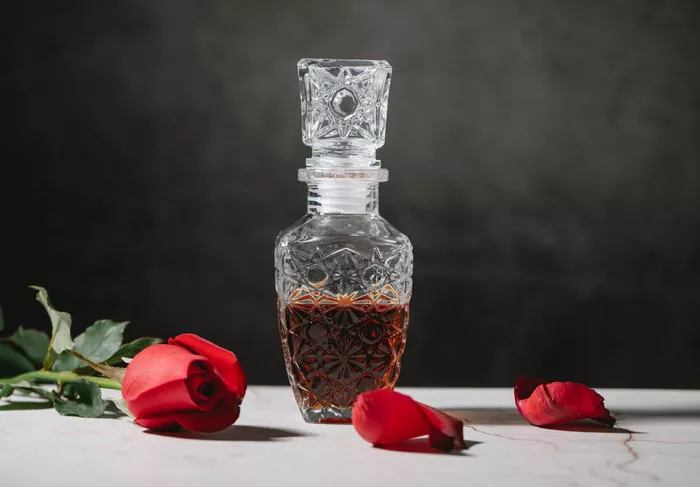Brandy, often associated with sophistication and elegance, is a diverse spirit with a multitude of flavors to offer. Whether you’re an enthusiast or a novice, understanding the different flavors of brandy can greatly enhance your appreciation of this timeless drink. In this article, we’ll delve into the world of brandy and explore the rich tapestry of flavors it has to offer.
1. Fruit-Forward Flavors:
Grapes: Most brandies are derived from grapes, and the grape variety used plays a significant role in determining the flavor. For instance, Cognac is made from Ugni Blanc grapes, which contribute to its fruity and floral notes.
Apple: Apple brandy, also known as Calvados, boasts a delightful apple essence. It is often aged in oak barrels, imparting a woody undertone to its flavor profile.
Cherry: Cherry brandy, made from fermented cherry juice or fruit, carries a sweet and slightly tart taste with a distinct cherry aroma.
Pear: Pear brandy, or Poire Williams, offers a delicate and fragrant flavor, reminiscent of ripe pears.
2. Oak-Aged Flavors:
Vanilla: Brandy aged in oak barrels tends to develop vanilla notes due to the interaction with the wood. This vanilla aroma adds depth and complexity to the spirit.
Toffee and Caramel: Extended aging in oak barrels can result in brandy with toffee and caramel flavors, which provide a luscious sweetness.
Spices: Some oak-aged brandies exhibit hints of spices like cinnamon, nutmeg, and cloves, contributing to a warm and inviting taste.
3. Nutty and Almond Flavors:
Almond: Amaretto, a popular almond-flavored brandy, offers a distinct almond taste and aroma, often accompanied by a touch of bitterness.
Hazelnut: Hazelnut-infused brandies provide a nutty richness and a smooth, creamy texture, making them an excellent choice for cocktails.
4. Herbal and Floral Notes:
Herbal: Some brandies, such as Chartreuse, are infused with a blend of herbs and botanicals, resulting in a complex herbal flavor profile with a hint of bitterness.
Floral: Elderflower brandy, for example, is known for its delicate floral notes, making it a delightful option for those who appreciate a lighter, more aromatic brandy.
5. Spice and Pepper Undertones:
Pepper: Peppery brandies, like Armagnac, often have a bold and spicy character, with hints of black pepper and other spices.
Anise and Licorice: Some brandies incorporate anise and licorice flavors, adding a touch of sweetness and complexity.
6. Earthy and Smoky Tones:
Earthy: Brandy aged in earthy environments or regions may develop earthy undertones, offering a unique and rustic flavor experience.
Smoky: In rare instances, brandies can exhibit smoky notes, similar to those found in certain whiskeys, due to the aging process and the type of barrels used.
7. Six common senses about brandy
The origin of brandy
The word brandy comes from the Dutch “brandewijn”, which means “shochu”; but some people think that it comes from the Latin “Aguavitae (meaning water of life)”.
Raw materials of brandy
What is usually called “brandy” refers specifically to spirits made from grapes through fermentation, distillation, aging and other processes.
Brandy producing countries
Brandy is produced in many countries around the world, such as France, Spain, the United States, Mexico, Germany, Greece, etc. Among them, brandy produced in France is the most famous.
Brandy grade classification
Depending on the barrel aging time, brandy can be divided into different grades, but each country and region has different standards, and even companies have their own standards.
Professional brandy tasting
Brandy tasting is the same as wine. Brandy tasting is mainly divided into the steps of observing color, smelling aroma and tasting.
Prepare wine glasses: Brandy glasses are not the same as wine glasses. Most of them have a narrow mouth and a wide belly.
Observe color: Observe the color of the surface of the wine. From the color, you can roughly tell its aging time. From young to aged brandy, the color gradually changes from straw yellow in youth to golden, amber or even reddish brown.
Smell: The brandy includes three consecutive smells: while the glass is still, after the glass is lightly rotated and shaken, and after the wine is shaken vigorously. From this, the aroma will gradually become thicker and subtler, and the various aromas will be completely different.
Tasting: Take a sip of the brandy and allow it to glide slowly throughout your mouth to maximize all flavors, alcohol, tannins, structure and finish.
8. How to drink brandy
Pure drink: refers to drinking directly without adding any ingredients, which is a great stimulation to the senses, which may be difficult for beginners to accept, but those who love wine can appreciate the mystery of brandy from it.
Adding water, ice cubes or fruit juice: Because brandy has a strong taste, watering it properly, or adding some ice cubes, fruit juice, etc. can reduce the concentration of brandy and make it more delicious and easy to drink.
Cocktails: Brandy can also be used as a base liquor to make colorful cocktails, which can be mixed and drank according to your own taste.
In conclusion, brandy is a versatile spirit that can be appreciated for its diverse range of flavors. From the fruity notes of grape-based brandies to the rich, oak-aged varieties, and everything in between, there’s a brandy flavor to suit every palate.


